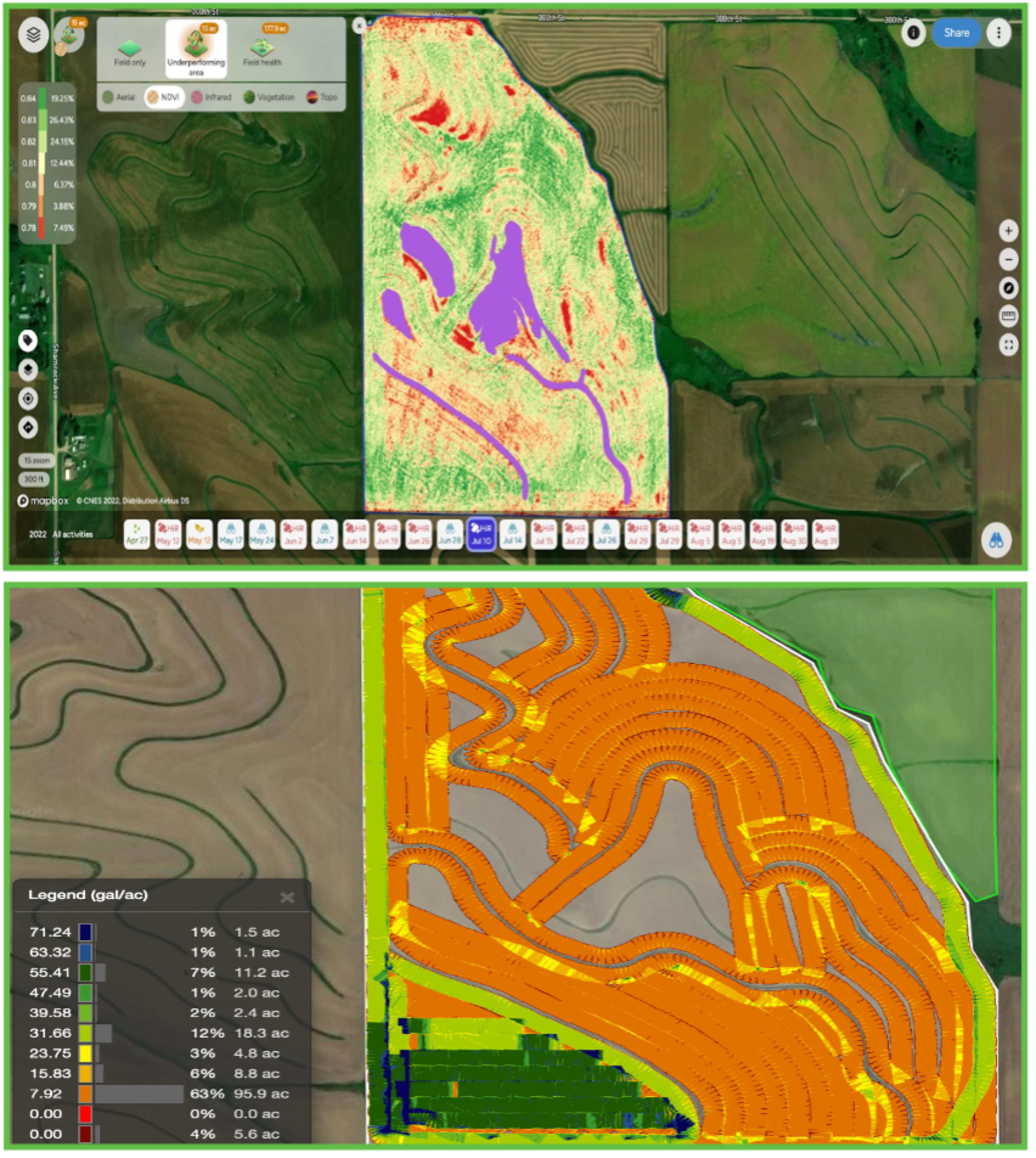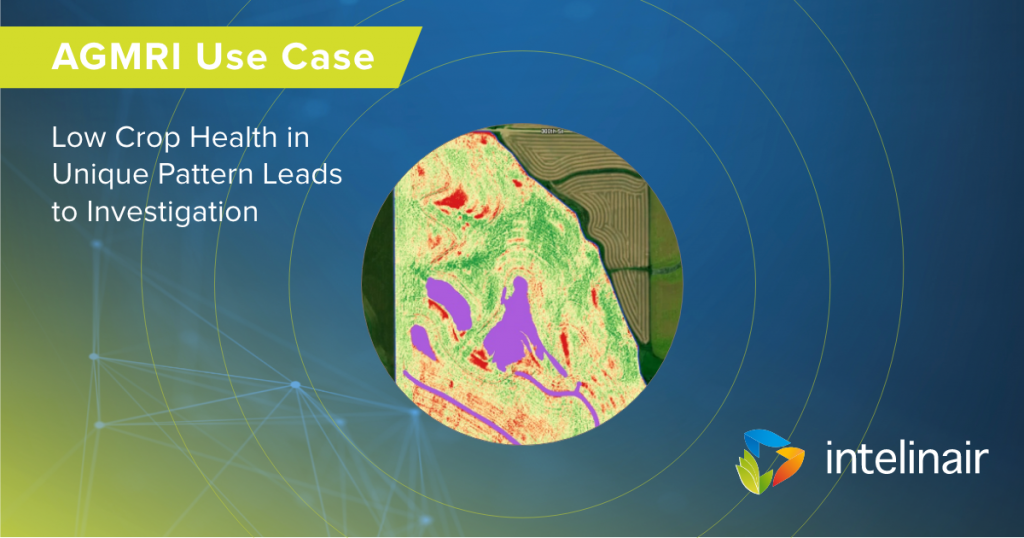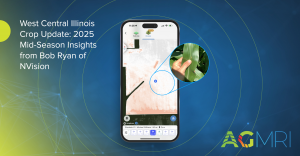Background
In Northwest Iowa, a historically corn and soybean rotation field experienced a few challenges in recent years. In 2020 the grower saw poor corn yields in specific areas, which the grower attributed to dry weather conditions. In the fall of 2021, some terraces were removed. In 2022, the grower started monitoring their fields with AGMRI and noticed a recurring pattern of poor crop health in those same areas.
Challenge
The grower’s main concern was understanding the cause of the recurring poor crop health pattern.
They were unsure whether the issue was related to the removal of terraces, missed nitrogen application, or some other factor. The yield monitor showed poor performance in these areas in 2020, and the grower was worried about the potential yield loss if the issue remained unresolved. The grower was “on the fence” about what action to take and needed a way to validate and evaluate the situation. They used AGMRI to analyze satellite imagery and identify the patterns in the field.
Solution
AGMRI played a crucial role in helping the grower address the issue. Initially, they suspected the terrace removal might be causing the problem, but further investigation ruled this out as the pattern mostly occurred above the old terraces. Then, the grower considered a missed nitrogen application as the reason for poor crop health. After consulting with their agronomist and reviewing the AGMRI images, they shifted their focus to potential Potassium or Phosphorus deficiencies. In referencing the RGB map, they observed “silver” looking corn and the NDVI of low vegetation in those areas. AGMRI prompted the grower to revisit their application data, and they discovered a map of the P&K application from the spring of 2020, which confirmed the missed application. This discovery led to targeted corrective action.
Results
Upon discovering the missed P&K application in certain areas, the grower applied a higher rate of P&K in the fall of 2023 to address the deficiency. As a result, they mitigated the issue and improved the health of the crops in those areas. Analytics revealed these missed areas had a significant impact, resulting in a yield loss of 48 bushels per acre at a rate of $6 per bushel, amounting to a financial loss of $3,570 for this one field. This experience emphasized the importance of data-driven decision-making and the value of using AGMRI to identify and rectify crop health issues. In the future, the grower plans to continue using AGMRI to monitor and prioritize their fields during critical times, ensuring more efficient and productive crop management.















